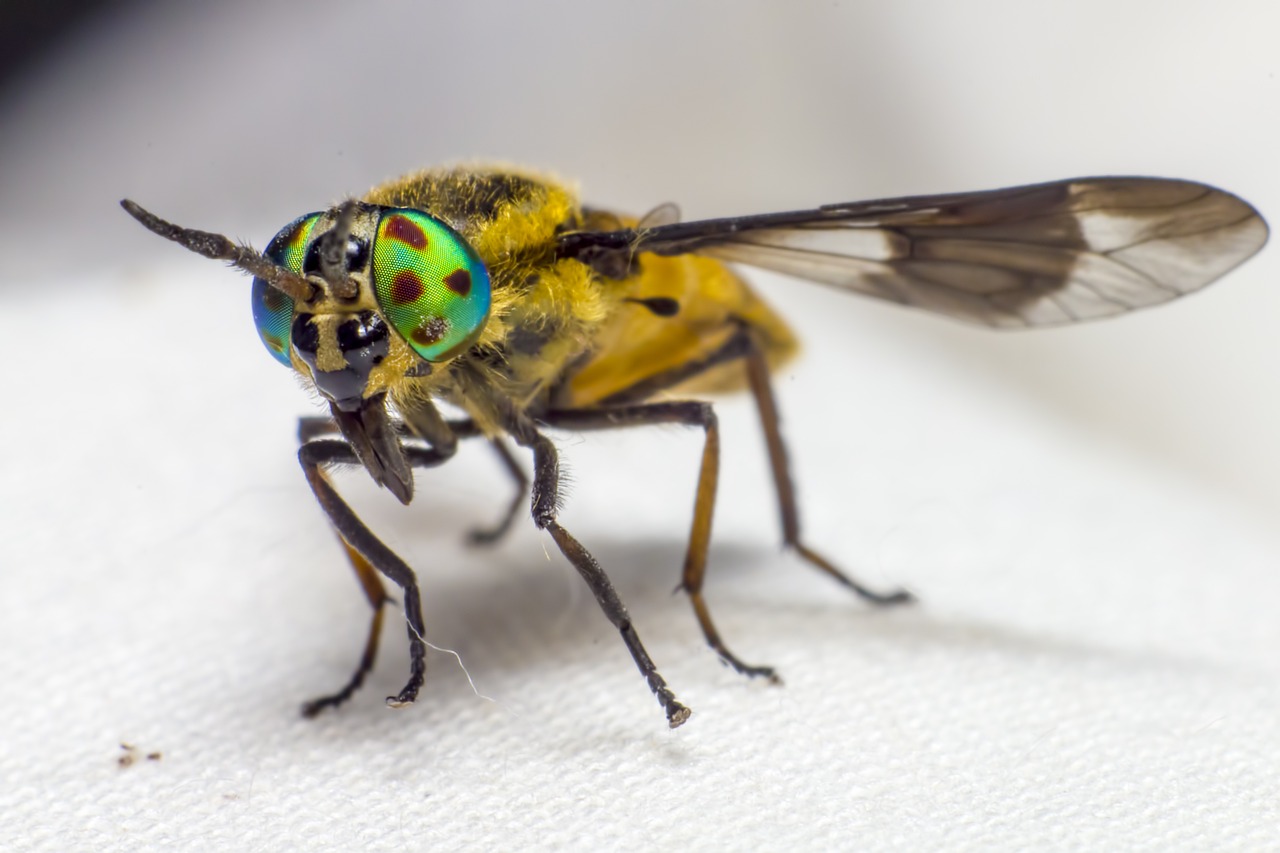The Splayed Deerfly (Chrysops caecutiens) is a member of the family Tabanidae, known for its biting behavior and distinctive appearance. Here are some key details about this species:
Appearance
- Size: Adult Splayed Deerflies are medium-sized, typically measuring about 7-10 mm (0.3-0.4 inches) in length.
- Coloration: They have a striking appearance with bright, iridescent eyes that often display bands of green, gold, and purple. The body is generally dark with yellow or brown markings on the abdomen.
- Wings: Their wings are clear with dark bands or spots, a characteristic feature that helps in their identification.
- Antennae: The antennae are short and stout, suited for their lifestyle.
Habitat
- Range: Chrysops caecutiens is found throughout Europe and parts of Asia, thriving in temperate regions.
- Environment: They prefer moist environments, often near water sources such as rivers, lakes, and wetlands. They can also be found in meadows, forests, and agricultural areas.
Behavior
- Feeding: Female Splayed Deerflies are hematophagous, meaning they feed on the blood of mammals, including humans. Males, on the other hand, feed on nectar and plant juices.
- Biting: Female deerflies use their sharp mouthparts to cut the skin and lap up the blood. Their bite can be painful and cause irritation.
- Activity: These flies are most active during warm, sunny days and are often seen hovering around potential hosts or resting on vegetation.
Life Cycle
- Reproduction: Mating typically occurs in the summer. After mating, females lay their eggs on vegetation near water or in moist soil.
- Eggs: The eggs hatch into larvae, which develop in wet soil, mud, or decaying organic matter. The larvae are predatory, feeding on other small invertebrates.
- Pupation: After several larval stages, they pupate in the soil. The pupal stage lasts a few weeks before the adults emerge.
- Adults: Adult Splayed Deerflies have a relatively short lifespan, focused on feeding and reproduction.
Adaptations
- Vision: Their iridescent eyes provide excellent vision, helping them locate hosts and avoid predators.
- Mouthparts: The females’ specialized mouthparts are adapted for piercing skin and feeding on blood, which is essential for egg production.
Ecological Role
- Pollination: While females feed on blood, male Splayed Deerflies contribute to pollination by feeding on nectar and visiting flowers.
- Food Source: They serve as prey for various predators, including birds, bats, and other insects, playing a role in the food web.
Conservation
- Status: Chrysops caecutiens is not currently considered endangered. However, habitat destruction and changes in land use can affect their populations.
- Management: Managing deerfly populations in human-inhabited areas can be challenging due to their painful bites. Protective clothing and insect repellents are commonly used to reduce bites.
The Splayed Deerfly (Chrysops caecutiens) is a distinctive and interesting species, known for its vibrant eyes and biting behavior. While they can be a nuisance to humans and animals, they play an important role in their ecosystems both as pollinators (males) and as part of the food web.
Visited 192 times, 32 visit(s) today
Views: 363
Subscribe to the newsletter:
